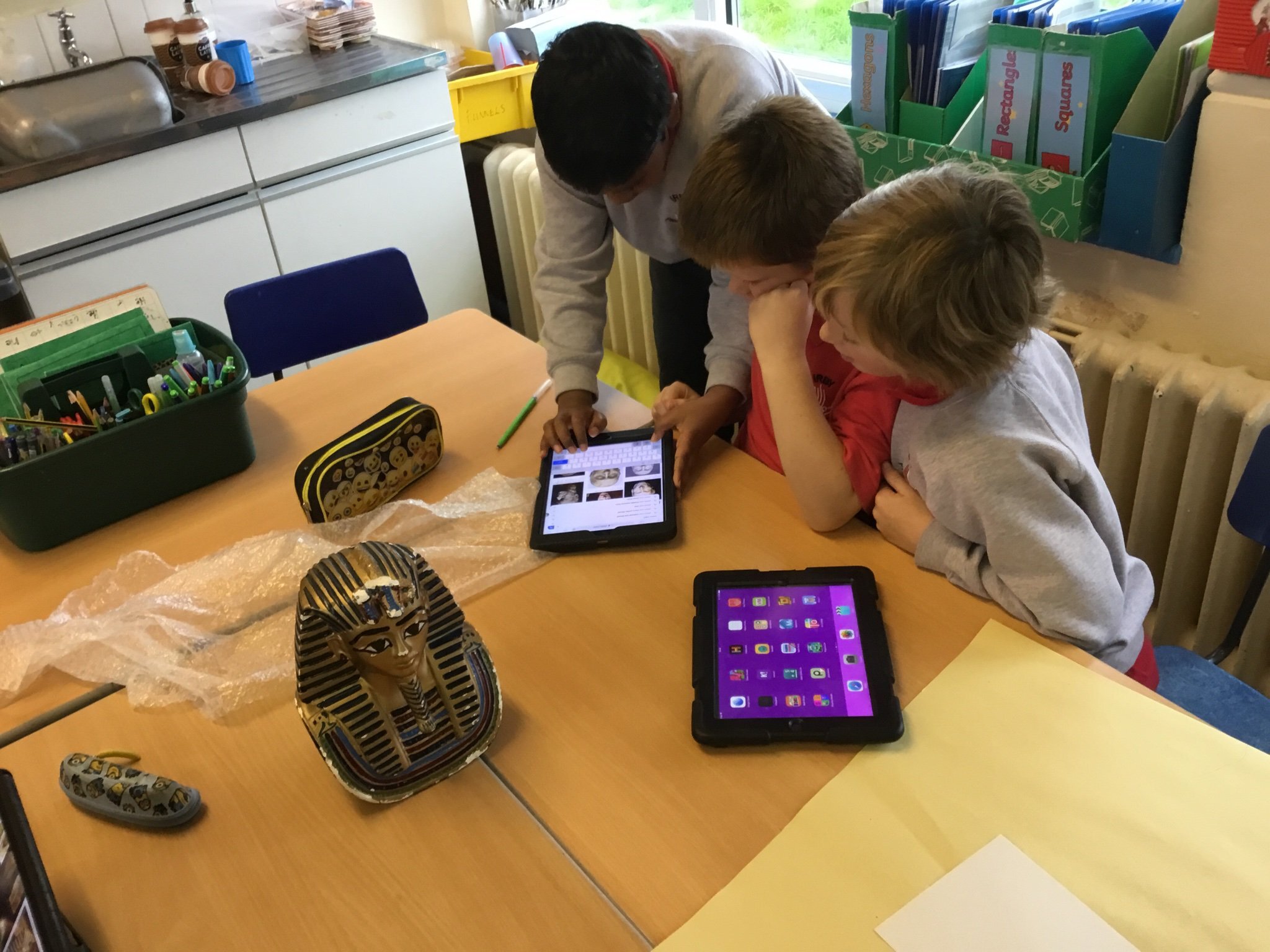Computing
Intent
At Irby Primary School, we believe that computing is a fundamental part of our children’s education to ensure they are prepared for the digital world in which we live. We encourage children to embrace technology and to have a life-long love of learning. Through a progressional skills based curriculum, we aim to develop confident, independent learners who are able to plan, design, create, program and evaluate information, through the use of ICT, ensuring that children become digitally literate to be active, safe participants in the digital world.
Implementation
Computing skills are taught both discreetly and through cross-curricular opportunities planned to link to individual year group’s English, Maths, Science and a range of foundation subjects as appropriate. We aim to engage children with cross-curricular learning through interacting with a variety of technology. We believe technology can be used to successfully enrich learning opportunities and we therefore endeavour to provide computing opportunities through each area of the curriculum to provide a stimulus for learning. We predominantly use the Teach Computing units of work and their resources to support computing from Y1 - Y6. We loan the Microbits sets from the School Library Services to teach programming from Y1 through to Y6, developing children’s skills and knowledge further in each year group.
As well of the benefits of computing, we are also aware of the risks. This is why we prepare our children to stay safe online with e-safety awareness sessions and safer internet days. We teach our children to be responsible users of technology and instill an understanding of how and when to seek support.
Impact
If you were to walk into a session where children are using their computing skills, you would see:
• Proficient users of technology who are able to work both independently and collaboratively.
• Computing hardware and software being utilised to enhance the learning outcomes of our children, across the curriculum.
• Clear progression in technical skills.
• A learning buzz as children engage with their learning.
• Confident and resilient users of technology.
Progression Maps:
Internet Safety:
The school takes its responsibility to ensure the safety of children as they explore and become familiar with ICT, the internet, mobile devices and mobile phones.
New digital technologies offer a wealth of opportunities for children and young people to learn, create and communicate.
As parents and carers, our natural desire is to keep our children safe. In every aspect of development – from learning to cross the road, ride a bike or swim – parents must teach, guide and support their children: the online world is no different.
The best defence against any online risk is openness, awareness and education. Talk with your children about their online activities, share their experiences and learn from them. Help them to use technology positively and responsibly, and give them boundaries, guidance and support.
LEARNING ONLINE
The Internet is often the first stop for pupils who have a project to research or a question they want answered.
Advice for you: Use child-safe search engines such as https://www.kiddle.co/ or https://www.kidzsearch.com/ . Focus on results from trusted resources, such as the websites of established organisations and well-known newspapers and magazines. On Google you can choose to activate ‘safe search’.
SOCIAL NETWORKING
Social networking sites allow users to stay in touch through instant messaging and photo sharing.
Advice for you: Always pay close attention to app age restrictions. Children at primary school should never access sites for older children or adults.
VISITING VIRTUAL WORLDS/INSTANT MESSAGING
Children of all ages are drawn to virtual worlds where they can customize and control their own characters or 'avatars', play games and interact with other players. Minecraft is a popular example of this.
Advice for you: Ask your child for a tour of their favourite virtual worlds. Carefully check the privacy settings and parental controls. Never allow your child to play a game an age restriction that is higher than their actual age.
"HOW TO" GUIDE: PROTECTING YOUR CHILD'S ONLINE PROFILE AND ACTIVITY
TALK ABOUT HOW THEY USE THE INTERNET
Encourage your children to tell you if something they encounter on the internet makes them feel anxious, uncomfortable, or threatened. Think You Know have advice on how to do this.
ESTABLISH INTERNET RULES.
As soon as your children use the Internet on their own, establish rules for internet use. These rules should define whether your children can use social networking sites and how they can use them.
EDUCATE YOURSELF, STAY IN THE ‘LOOP’
Evaluate the sites that your child plans to use and make sure both you and your child understand the privacy policy and the code of conduct. Find out if the site monitors content that people post. Also, review your child's page periodically.
TEACH YOUR CHILDREN NEVER MEET ANYONE IN PERSON THAT THEY'VE COMMUNICATED WITH ONLINE ONLY.
Children are in real danger when they meet strangers in person whom they've communicated with online only
ENCOURAGE YOUR CHILDREN TO COMMUNICATE WITH PEOPLE THEY ALREADY KNOW.
You can help protect your children by encouraging them to use these sites to communicate with friends, but not with people they've never met in person.
BE WARY OF IDENTIFIABLE INFORMATION IN YOUR CHILD'S PROFILE.
Teach your child to use only a first name or nickname, but not a nickname that would attract inappropriate attention. Be careful when your children reveal information that can identify them, such as a school mascot, a workplace, or the name of the town they live in.
Useful Links:
Follow the links below to find some great advice to help keep your children safe online.













